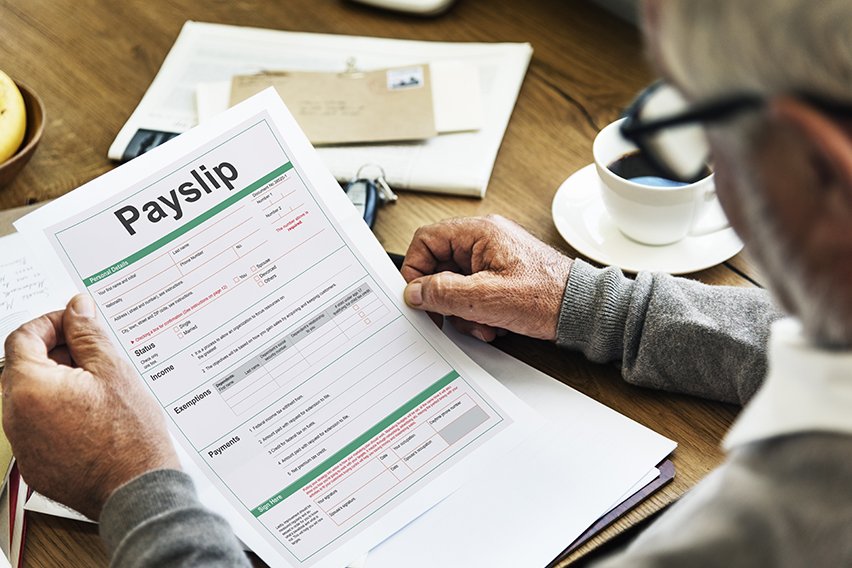What Is Project Life Cycle: The 5 Phases

Taking on projects can be a stressful experience.
In the role of project manager, you have to handle the client’s demands as well as manage a project team. A wide range of skills is necessary to be a successful project manager that can reliably get a project from start to finish.
One of the vital things that a project manager needs to be aware of is the five different phases of a project’s life cycle.
Project phases are a great way to tackle a daunting project. You can break down a project into five different phases, each with its own project goals, deliverables, and deadlines. By doing this, you can create a clear timeline and structure.
But what are the 5 phases of a project life cycle? We’ll take a closer look at what exactly project management is. We’ll also break down each of the five phases so that you can get the relevant information to make your projects more manageable.
Here’s What We’ll Cover:
What Are the Five Phases of a Project’s Life Cycle?
What Is the Triple Constraint?
Why Is the Triple Constraint Important?
What Is a Project?
A project is a series of tasks that have a specific purpose and end goal. These tasks need to be completed within a set timeline, and when they are completed, a product or service is created.
Projects are unique within the business world because they are a one-time thing that ends. This is opposed to other business processes that will either repeat or continue on a regular basis.

What Is Project Management?
Project management is the process of planning and executing a project. It is a discipline that seeks to achieve a set of defined deliverables and goals by using plans, schedules, and a variety of resources. This is to execute project activities within a given time frame.
Either the client or stakeholders will define the goals and objectives of a project. A project manager will then apply a wide range of project management methodologies to create a clear plan. This plan will establish the tasks, resources needed, milestones, and deliverables — all things necessary to meet these goals.
This plan also has to account for the triple constraint. This refers to the limitations that are associated with a project, namely the time, cost, and scope that will apply to every project.
When under the stress and duress of managing a project, many businesses will make use of project management software to ease the workload. Software such as FreshBooks can keep projects on track and allow teams to be far more efficient and productive.
What Are the Five Phases of a Project’s Life Cycle?
Every project will go through a life cycle. This is classically made up of five project management stages:
- Initiation
- Planning
- Execution
- Monitoring and Control
- Closure
But what do each of these phases entail? Let’s take a closer look at what happens at each stage of the project life cycle:
Phase 1: Project Initiation
The first phase of any project will be the process of turning an idea into a goal and defining the entire project that you’re aiming to complete.
The aim for the project manager in this first stage is to prove not only that this project has inherent value but that the project is also feasible within the established guidelines.
This stage is also where you will create a business case. A business case will show justification for the project as well as a feasibility study. This study will aim to prove that the project can be executed within a reasonable cost and time.
You’ll also create a project charter. This is a document that will convey what the project is going to deliver. This serves a similar purpose to a project brief.
This stage will culminate in a project kickoff meeting. This meeting will bring together the project team, stakeholders, and any other relevant parties. In the meeting, the stakeholders will lay out a number of things, including the goals, schedule, chain of communication, and processes.
Phase 2: Project Planning
Once the project and all of its components are approved, the project will move into the second phase of its life cycle; project planning. The main objective of this phase is to create a detailed project plan. This will then act as the guide for the following two phases.
A good project plan will include all the minutiae of every component associated with the successful execution of the project. This includes factors such as cost, risk, resources, and a detailed timeline.
Another key component of this phase is defining the project scope using a work breakdown structure, or WBS. The WBS will break the project down into a series of activities, milestones, and deliverables. This, in turn, makes it easy for project managers to create schedules and assign a variety of tasks to each project team member.
This is a vital stage of the process. If everything is clearly set out, planned, and defined, it makes the entire process much more manageable. This is essentially the roadmap for a successful project.
Phase 3: Project Execution
So you’ve made a detailed plan, now it’s time to put that plan to work.
The third phase of a project life cycle is the execution phase. This is when the tasks and milestones meticulously planned in the previous phase are tackled to produce the deliverables.
Before this stage commences, the project manager will tend to preface this phase with a team meeting. Here, they will remind the team of the project objectives. They will also make certain that each and every member knows their roles and responsibilities.
During this phase, the project manager will also try to identify and mitigate any potential risks. As well as deal with any problems and try to seamlessly incorporate any last-minute changes.
Phase 4: Project Monitoring and Control
This is a key stage for a project manager and happens alongside the execution phase.
The project manager will need to keep a detailed track of everything that is going on. They also will need to allocate extra resources and manpower as they deem appropriate in order to keep the project on track.
They will also need to consistently check in with each team member to make sure that they’re keeping to the plan. They are there to give support and encouragement and help keep morale high to keep everything going smoothly.
The biggest and most common issues at this stage tend to be related to the three factors that we mentioned earlier – time, cost, and scope. So the main goal of this phase is to make sure that each of these issues is firmly under control and none deviate from the plan.
Phase 5: Project Closure
The fifth and final phase of a project’s life cycle is project closure.
At this stage, the deliverables are finalised and presented to the client or stakeholder for approval. Once they have signed off on the final product, resources will be released, all documentation needs to be completed, and everything must be signed off on.
Most project managers at this stage will hold a post mortem meeting to evaluate the project’s process. They will discuss the lessons learned throughout the project, what went well and what didn’t go so well.
After this post mortem, the project manager will create a report to present to the upper management.
This report will break down the finished project and collect all of the relevant documentation for inspection and filing. The managers may also list any incomplete tasks, the reasons for this, and show the project budget and any additional costs.
This phase may also include handing over control to a different team, depending on the project. If this is the case, it is up to the project manager to ensure that a smooth transition occurs.

What Is the Triple Constraint?
We have mentioned the triple constraint of project management a couple of times so far. As mentioned, this refers to the boundaries of time, scope, and cost.
This concept is a regular occurrence of project management and therefore needs special attention.
To help you understand the importance of the triple constraint, we’ve broken down each component:
Time
Time is a key aspect of any project. Project managers must be efficient at estimating the amount of time required to successfully complete the project.
This must be done during the initiation and planning phases of the project life cycle. This is in order to develop a schedule that covers the duration of each of the project activities.
When it comes to projects, time equals money. So it’s vital that time is managed efficiently.
Scope
The scope refers to all of the work that is necessary to complete a project successfully.
This must be identified during the project’s life cycle planning stage by creating a work breakdown structure.
If the scope isn’t properly defined early on in the project, it can massively impact the execution phase. This is due to a number of unplanned activities popping up that need to be completed. This is what is known as scope creep and can have negative repercussions on the entire project.
Cost
A wide range of costs is associated with a project. Project managers are responsible for estimating, budgeting, and controlling a project’s costs for its successful completion within the approved budget.
Why Is the Triple Constraint Important?
The triple constraint is crucial to any project, no matter the size.
The three elements of the triple constraint are always influencing one another. So if there is a setback in time, then you will have to adjust the scope or the cost. The same is true for the other two points.
It’s the duty of a project manager to make sure that all three of these constraints are in check and balanced throughout the project life cycle.
Key Takeaways
A successful project needs careful planning of the project life cycle. Being organised is absolutely essential to the success of any project, so knowing each stage of the life cycle is incredibly useful.
Are you looking for more business advice on everything from starting a new business to new business practices?
Then check out the FreshBooks Resource Hub.
RELATED ARTICLES

 Shopify Vs WooCommerce: Which Is the Better Platform?
Shopify Vs WooCommerce: Which Is the Better Platform? 5 Best Point of Sale Systems for Small Business
5 Best Point of Sale Systems for Small Business How to Make a Payslip? (Template Included)
How to Make a Payslip? (Template Included) 4 Best Stock Control Software for Your Business
4 Best Stock Control Software for Your Business All About Systems Thinking
All About Systems Thinking